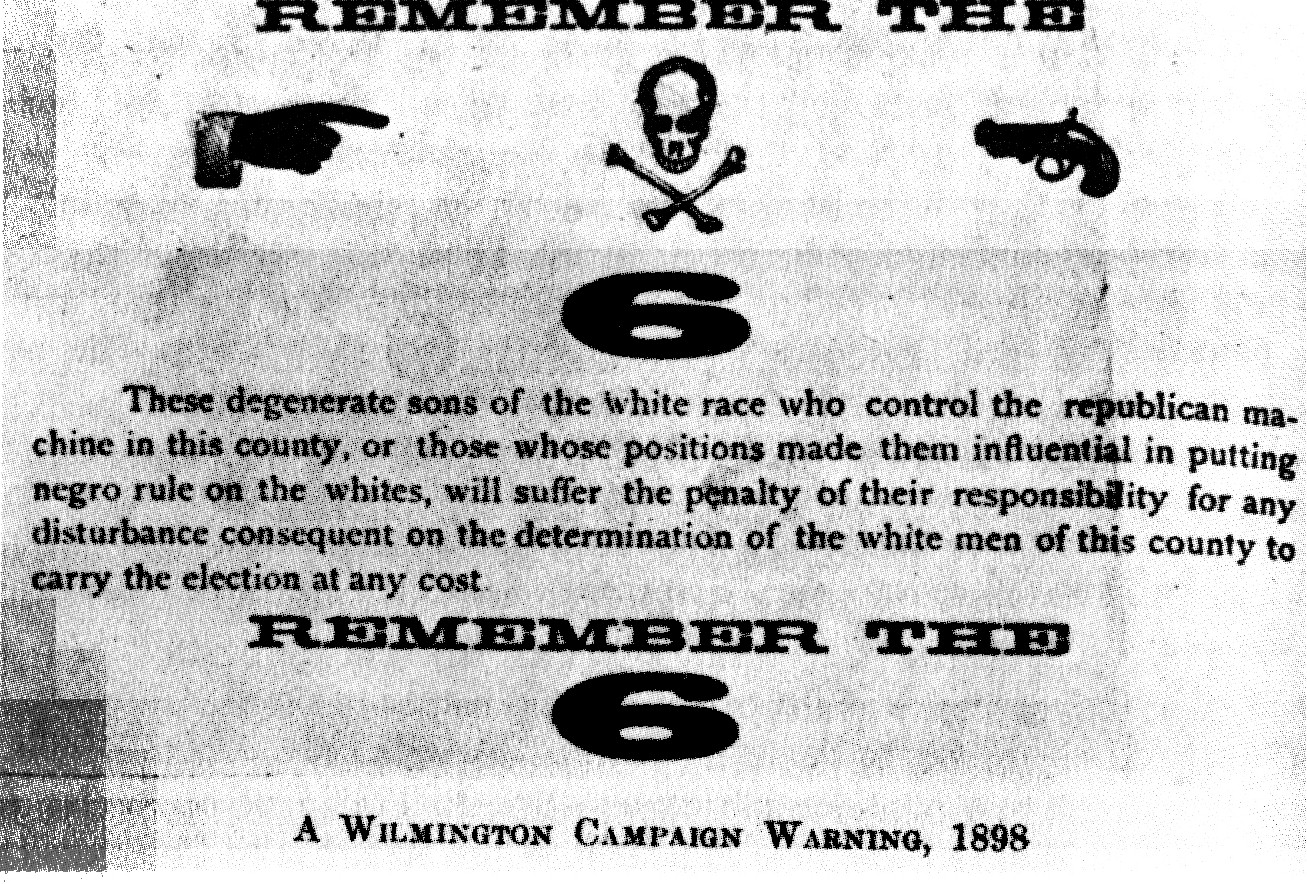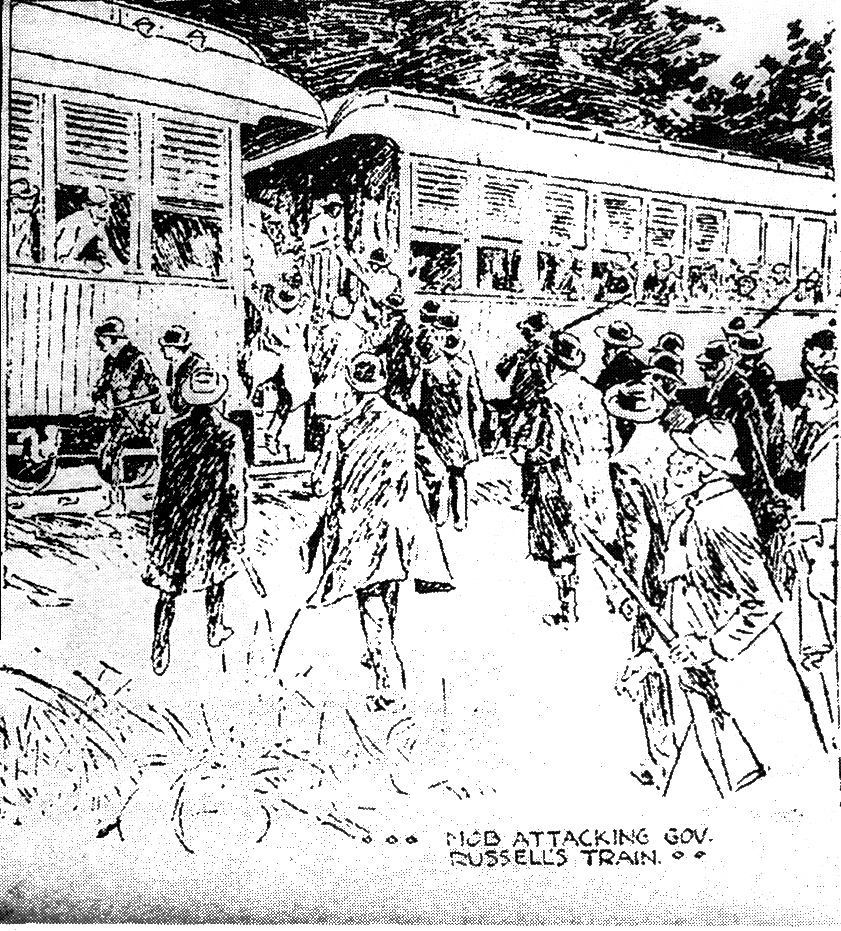THE FALL ELECTIONS

Note the commitment to "carry the election
at any cost"
THE FALL ELECTIONS

Note the commitment to "carry the election
at any cost"
During the fall, the Democrat white supremacist campaign and the conspiracy to overthrow the city government began in full swing.Many tactics were used to intimidate African American voters.
The Nine arranged to have a Gatling gun brought to Wilmington, and placed at the disposal of the local state militia. Twenty five black leaders were summoned to a "demonstration" of the fire power of this weapon, and warned to withdraw from the fall elections.The Redshirts marched or rode, armed and defiant, in the streets. White Government Unions staged armed marches, insisting that whites should be given employment privileges. Threatening pamphlets, like the one above, were distributed freely. African Americans employed by whites were warned that their actions were threatening the peace and economic progress of the city. Republican officials and office holders were threatened, and told that they should resign or not campaign in the fall. In response to the increasing threats and white supremacist marches, the black chair of the New Hanover Republican party attempted to purchase 200 Winchester rifles through an intermediary, but the attempt was foiled by a white purchasing agent and then widely publicized.
In the last stages of the campaign, Col. Waddell made his inflamatory speeches about "choking the Cape Fear River with black carcasses," which further added to the atmosphere of violence.
Every day, the Messenger carried the advertizement-like editorial on the front page, of the "attack on White Christian Womanhood" by the "scurrilous negro editor," Alexander Manly.
Racial tension increased, both in Wilmington and throughout the state. Republican leaders, led by Governor Russell, negotiated with the Democrats, and in many areas, including New Hanover county, many Republicans, white and black, withdrew from the elections.
However, these efforts did not dissipate the emotions that had been stirred, or the paramilitary groups that had been formed, both in Wilmington and in other areas throughout eastern North Carolina (where the black population was concentrated, and often was in the majority).
On election day, November 8, 1898, the Democrats, riding the crest of their white supremacist campaign, swept to a decisive victory in the statewide elections. The state government would no longer protect the African American citizens or even the Wilmington municipal government from the local white supremacist revolutionaries.
Throughout the eastern part of North Carolina, white men took to arms. Governor Russell's train was attacked in Lumberton, North Carolina, and he narrowly escaped being lynched. But it was in Wilmington that the violence was focused and concentrated.

Governor Russell's train attackedreturn to Table of Contents
return to 3.3Link to 3.5:
THE WHITE DECLARATION OF INDEPENDENCE